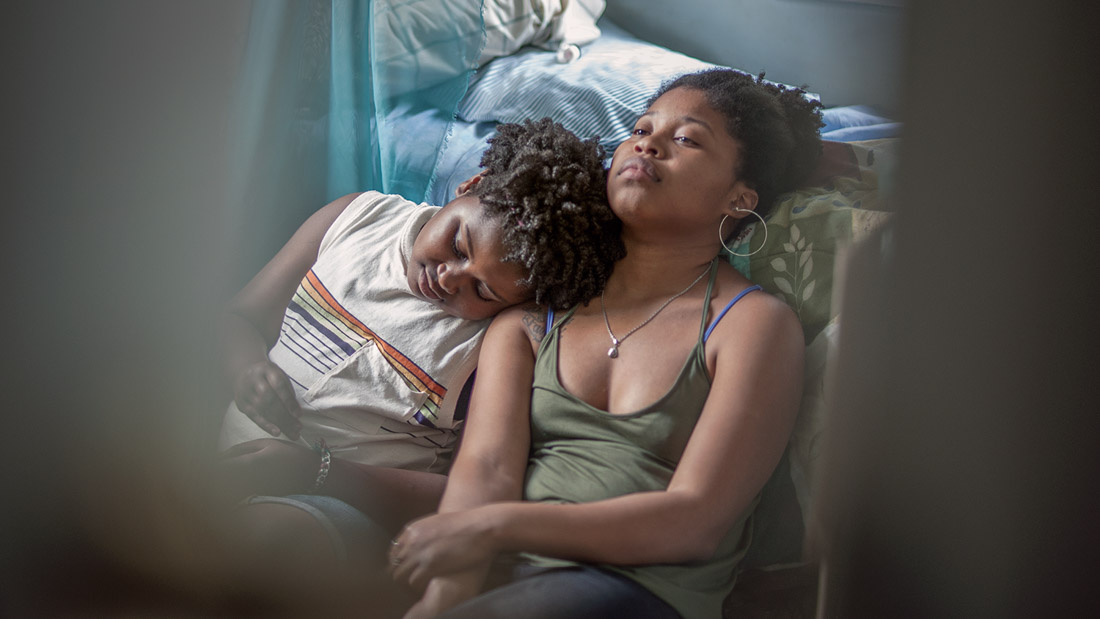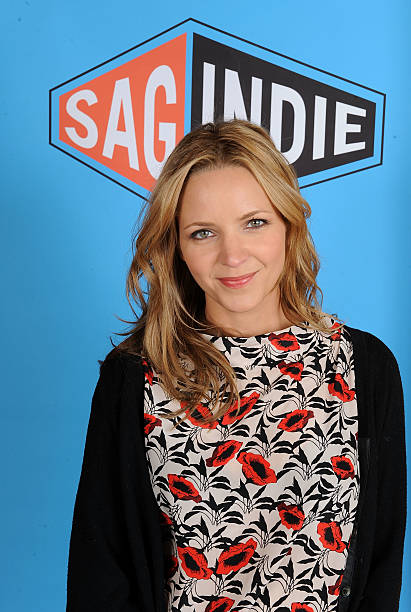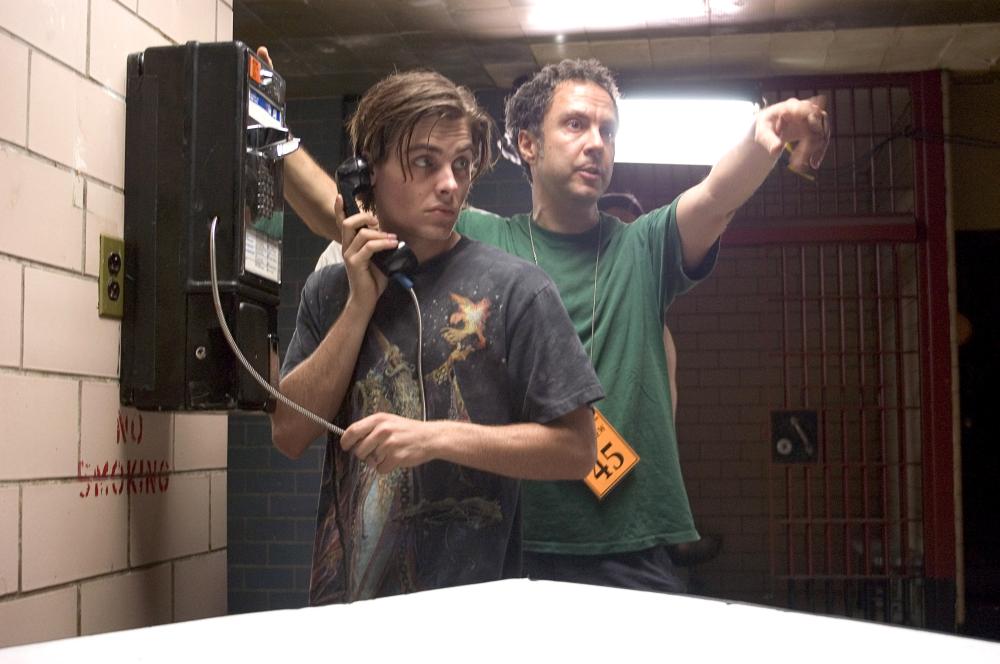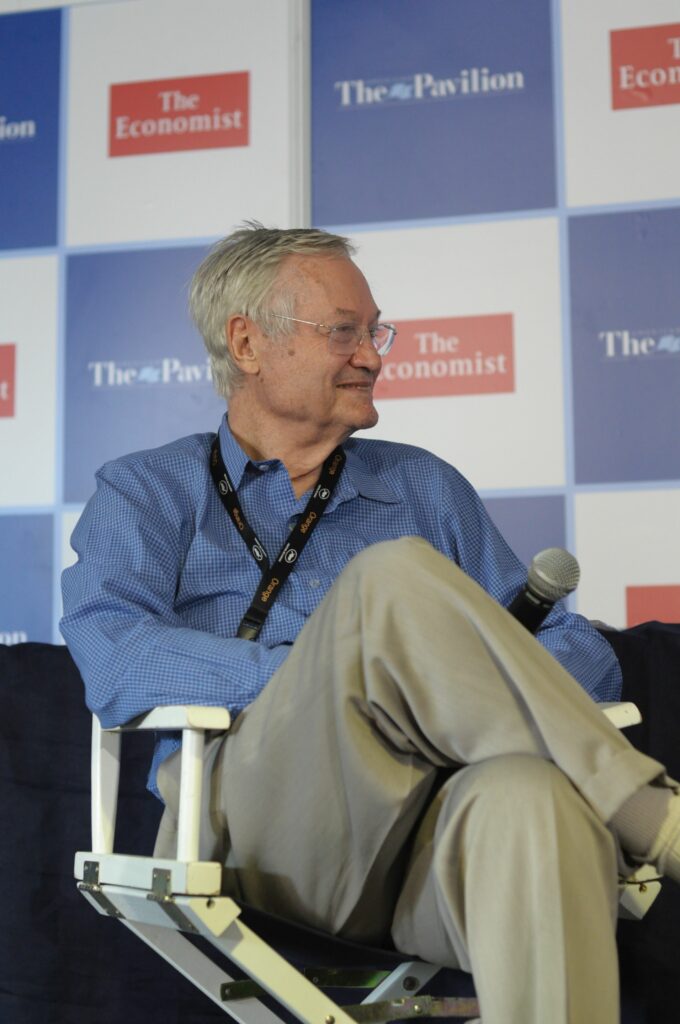As an actor, JORDANA SPIRO has been working steadily for almost two decades. Her breakout role was as the lead of the TBS series My Boys from 2006 to 2010, before going on to land roles on The Mob Doctor, Harry’s Law, Blindspot, and most recently Netflix’s Ozark. But in the midst of her busy acting career, Spiro began studying for her MFA in film at Columbia University. With an added focus on filmmaking – all while continuing to act – Spiro directed the short film Skin in 2012, which premiered at the Sundance Film Festival. She stayed within the Sundance fold and continued honing her voice as a filmmaker at their Screenwriting, Directing, and Catalyst Labs.
In 2018, Jordana returned to Park City once again, this time to premiere her feature directorial debut NIGHT COMES ON. Co-written with Angelica Nwandu, Night Comes On tracks 18-year-old Angel (Dominique Fishback) as she is released from juvenile detention and attempts to get back on track. Tatum Marilyn Hall co-stars as the 10-year-old sister Angel reunites with on her journey for answers and revenge. The film won the NEXT Innovator Award at Sundance, and arrives in theaters, on demand, and digital on August 3, courtesy of Samuel Goldwyn Films.
We talked with writer/director Jordana Spiro about making her first feature, the joy of working with child actors, and her advice for actors looking to move behind the camera.
——
COLIN McCORMACK: You co-wrote the screenplay with Angelica Nwandu [founder of The Shade Room], so I was curious about how you two met and ended up collaborating?
JORDANA SPIRO: I was volunteering with an organization called Peace4Kids, which supports foster youth in Los Angeles, and as I started to think about this story I was at the same time learning about what it means to age out of the foster system. I was compelled to set the film in that setting and within that experience. At the same time, that’s not my background. While I was observing it and getting to know young men and women within it, obviously it wasn’t something I could speak to on a personal level. So I wanted to write the story with somebody who first, of course needed to be a writer, but who also firsthand knew what that journey was like. So the Executive Director, a man named Zaid Gayle, in fact introduced [Angelica and me] and we just really hit it off when we met. She was writing a lot of poetry at the time and my interest in film, especially then, was I really appreciated films that had a poetic sensibility or lyricism to them. Her sensibilities and mine just kind of matched, so while I was initially looking for somebody who could really help me speak more honestly to the foster youth experience, what was a really exciting and beautiful surprise was that I also found a real partner in the writing process of the film.
CM: What was that collaboration process like? Were you guys writing together in the same room or were you trading off on drafts?
JS: It took a lot of different shapes and forms; all of the above. A lot of working through story beats over the phone; she was in LA, I was in New York. There was a lot of just talking together and then we would trade passes on scenes. We would say, Do you have a sense of this scene? Do I? Who has a more immediate sense of the scene? Great, give it a go. Then we’d pass it back and forth. And then the [Sundance] Screenwriters Lab was incredible because it gave us that time to really work in-person. Then continuing from there, we received the Cinereach development grant and so they were pretty instrumental in supporting us working in the same room together. I had just given birth right after the [Sundance] Directors Lab so it wasn’t so easy for me to travel, so Angelica came out to New York for a month and we go to work together in the same room and then after that continued on the phone. So all of the above [laughs].
CM: You had directed short films before. What made you decide it was time to make a feature? Was it dictated by the story that you knew you wanted to tell and it felt bigger than a short could provide, or did you already know you wanted to tackle the feature format itself?
JS: I had always thought of this particular story as a feature. I had never thought of it as a short film. When I made a short film called Skin I felt like I had expressed what I wanted to express with that short film, that it came out the way I wanted it to come out. So that’s when I had enough to try to tackle a feature.
CM: Have you liked the feature world? Now that you’ve worked on a Netflix show are you seeing opportunities for things that don’t necessarily fit into the same boxes of storytelling that they used to?
JS: Yeah, it seems like there’s so much opportunity in TV in the worlds that they’re willing to depict, so that’s exciting. I haven’t as of yet tried my hand at getting something produced in that way, so I don’t have a sense of it yet. I feel like when you think about a story, at least for me, it seems like the idea itself has its own things to say about what format it belongs in. Does it need six hours to tell it? Does it need an hour-and-a-half? Does it need five minutes? Does it need multiple years? I feel like the idea itself tells you what it wants it to be.
CM: As an actor-filmmaker, did you ever consider writing a script for yourself to star in?
JS: No. [Laughs] For me, they’re such different head spaces. When I’m on set as an actor, I really like the partnership with the director. I really like that they can be outside looking in and I can be fully submerged in the character. They can be the one to decide as they’re editing it and watching it in their head if those beats have been hit, if I have more to give, and all that kind of stuff. Never say never, but I don’t at this moment in time have any interest in being both people on set at the same time.
CM: Your star for Night Comes On, Dominique Fishback, you two had acted together before. Was that how you first met?
JS: Yeah, we met on the set of Royal Pains. I delivered her baby [laughs]. It was one scene that was just a few hours of work, but I thought there was something really interesting about her, so we stayed in touch. She let me know about her one-woman show that she wrote and was performing in, so I went to go see that. She played 22 different characters in that show, and it was kind of remarkable. So I was thinking a lot about her.
At the same time, my focus was a lot on [the younger sister character] Abby, because I had a feeling she was going to be a first-time actor. I just had a gut feeling about that. Our casting process for that was very lengthy and very much a needle-in-a-haystack kind of approach. Two incredible people were working on that, Marlena Skrobe and Olivia Creser. So when we had Julie Schubert, our professional casting director, come on board it was actually very funny because as I was writing to her, “Hey, will you reach out to Dominique Fishback and see if she will come in to read for the part?” she was at the very same time sending me Dominique Fishback’s audition and saying, “Hey, I really think you should look at this, I’m a big fan of hers and I really admire her work and think she did a knockout job.” So it was meant to be.

CM: How did you go about finding Tatum Hall to play Abby?
JS: It was really just the incredible endurance and creativity of Marlena and Olivia pounding the pavement for about a year. We auditioned over 1,000 girls and they were just very creative about the places that they were scouting and really tenacious. So I’m very grateful to them and the workload that they shouldered. They scouted [Tatum] at a step competition in the Bronx and then she came in and auditioned. And with every audition we had an immediate sense that she was our girl, but of course the part requires so many different sides of oneself and has such a range of emotion. So at every step trying to see if she could access another layer to Abby, she would just go in, come back, and continuously rise to the occasion and surpass what we had expected. So it was a no-brainer.
CM: Speaking of auditions, as an actor what is it like for you to hold auditions for other actors? Do you think you come at them from a different space than directors who haven’t been through the audition grind themselves?
JS: I like to give actors time in the room. I feel like the audition process, you have to go in the room and in 30 seconds nail the thing and you’re out. So I like to give a little bit more time. I think the thing that was different at least in the case of casting Abby is because we were working with younger girls – eight, nine, ten, eleven years old, most of whom had never acted before – we did improv-based auditions. And it was only until like the third callback we would actually give them a scene to read and perform. Because I just feel like reading a piece of paper and knowing how to perform that is such a different skill set than knowing whether or not a person can be emotionally accessible. I didn’t want to confuse those two things in the audition process.
CM: When it came time to shoot since Abby is such a large part of the film – and you had worked with child actors before on Skin – something that people often advise against is casting minors. But have you found it to be as difficult as all the cliché warnings say?
JS: No, I love it. I love working with kids. I think they’re great. They have the ability to be very malleable. Generally, a child who has not acted before is not thinking about how something is going to look or the result, which is often a block for an actor. So I really love the process and one of the things that was exciting about our pre-production is we got a lot of rehearsal time. We made sure of that so Dominique and Tatum could have some real time to build a shorthand as sisters and just to help develop Tatum’s confidence in this new world that she was being thrust into before there was a giant camera crew around her. Well, not giant – we were a tiny film [laughs], but by comparison to never having one around. But yes, the rehearsal process was key for me on this particular film.
CM: Rehearsals are fairly rare on lower budget films. Was that a challenge to fight for those extra days?
JS: I had great producers who really understood the importance of protecting that time. So they worked some magic to make sure that that was protected time. I don’t know how they did it, but they did it and they really understood why I was asking for it. So I was really lucky in that sense to have that support from [producers] Alvaro Valente and Jon Montepare.
CM: How many days was your shooting schedule?
JS: We had – again, thanks to the incredible work of the producers – we actually had 28 days. And that was again a big choice that we made in the beginning. Because of course, we were a very low-budget film so this was a conversation – a lot of conversations with my DP [Hatuey Viveros Lavielle] – was to say, What can we give up on the technical side of things to afford extra time? Because our film, while it’s small, it’s also sort of deceptively challenging on a logistical level because there’s no repeat location. Every scene takes place in a new place, plus half the film has minors in it. So you can’t pair up scenes or pair up days in the same way you would normally because every scene is a location move. So you also have to make sure the location moves make sense together. We were also shooting our exteriors in Philadelphia; they also go to Jersey; there was actually a lot of logistical difficulty in the film. That’s really why we wanted that amount of time, it was a bit of a logistical necessity because it was essentially a road trip film with minors. But because of that, we had to be very spare in our equipment, in our crew size, in our everything else.
CM: I was curious in regards to your crew, with your background in photography what is your working relationship like with your DP?
JS: I’ll start by showing him a lot of different photography. He’ll just ask me to awash him in images, references, ideas, color palettes, and also paintings that I’m thinking about. Then he is able to start to pull the similarities or what makes all those different images cohesive, then from there we start to think about what our language is going to be. For sure on this one, one of the things I knew I wanted from the very beginning was that it was a very subjective experience; that we very much felt that we were with Angel and we could really feel like we were her on her journey. That’s where we got to that long-lens, handheld look. Not handheld in that hugely shaky way, but a graceful, breathing handheld which, with longer lenses is very difficult to do, especially on a moving bus. So he’s incredible in that way that he was able to do that. The other gift that he comes with is he does a lot of documentary filmmaking as well, so he’s a very kind and gentle person to have around and he allows the actors to feel almost like he’s not there. He’s used to working with documentary subjects who are not used to a camera at all, so he’s very capable at making himself this gentle, non-judgmental, kind of invisible presence, which was a huge help especially with kids, getting them to feel like there isn’t a gigantic camera right in their face.
CM: You’ve been pretty vocal about specifically wanting to tell stories with female protagonists. With this film having not only a female lead but a woman of color, did you face resistance along the way from potential financiers or distributors that you brought the project to?
JS: Absolutely. We got two years of no’s from financiers. The problem is, of course, I believe still that films that are dramas with non-white male protagonists are perceived to be niche films. So that then really diminishes the pool of production companies you can go to because you can only go to people who are interested in making niche films. And then, have they already checked off that box of that category for that year? So it was incredibly difficult to find financing and it was really through again incredible persistence on the part of my producers and also the Sundance Catalyst program and the investors that came on board who were primarily focused on the story and just appreciating the story, that we were able to get it made.
CM: It does seem like film nonprofits have really had to step it up to support diverse stories, largely to make up for the lack of support from the mainstream industry. You mentioned Sundance as well as Cinereach. Were there other film organizations throughout your career that you found to be valuable?
JS: Yeah, absolutely. Again, Sundance and Cinereach were huge pillars in the foundation of our film, as well as NYSCA, the New York State Council for the Arts. The Adrienne Shelly Foundation, they supported us with grant money for casting as we were doing our first-time acting approach.
CM: For other actors who are thinking of stepping behind the camera, do you have words of advice or lessons you were either given or wish you were given before you started directing?
JS: If you’re not going to get formal training, which is obviously not a necessity and there are certainly examples of filmmakers who haven’t, watch a lot of movies and really try to break down the scenes from the perspective of the camera. And just do it. The tricky thing about being an actor is one of the fundamental reasons a lot of people want to become actors is because they have so much they want to express. And it’s emotionally really difficult to be in a constant waiting game for something to be dropped in your lap to be able to express all these feelings and thoughts and ideas that you have inside of you. So don’t be afraid to step into that driver’s seat and do it as early as it feels right to do so.
CM: What is next for you, either on the acting or directing sides?
JS: Ozark season two is coming out August 31, I’m pretty excited about that and that I get to be a part of that show. And I’m just back at my writer’s desk now developing different and new ideas.
__
Thanks so much to Jordana for chatting with us about NIGHT COMES ON. Learn more about the film at the official website, or follow the movie on Facebook, Twitter, or Instagram.
This interview has been edited for clarity.
If you’re an independent filmmaker or know of an independent film-related topic we should write about, email blogadmin@sagindie.org for consideration.




